The Defense Advanced Research Projects Agency filled the courtyard at the Pentagon on May 11 with a variety of exhibitions at its annual DARPA Demo Day, giving the defense community and media a chance to see the next steps to maintain supremacy on the battlefield.
Here are some highlights:
The Robotic Arm:
Johnny Matheney, a civilian who lost his arm to cancer in 2008, demonstrated his one-of-a-kind prosthetic. This DARPA prototype is integrated directly onto the bone and uses sensors to pick up nerve signals from the brain to generate movement.
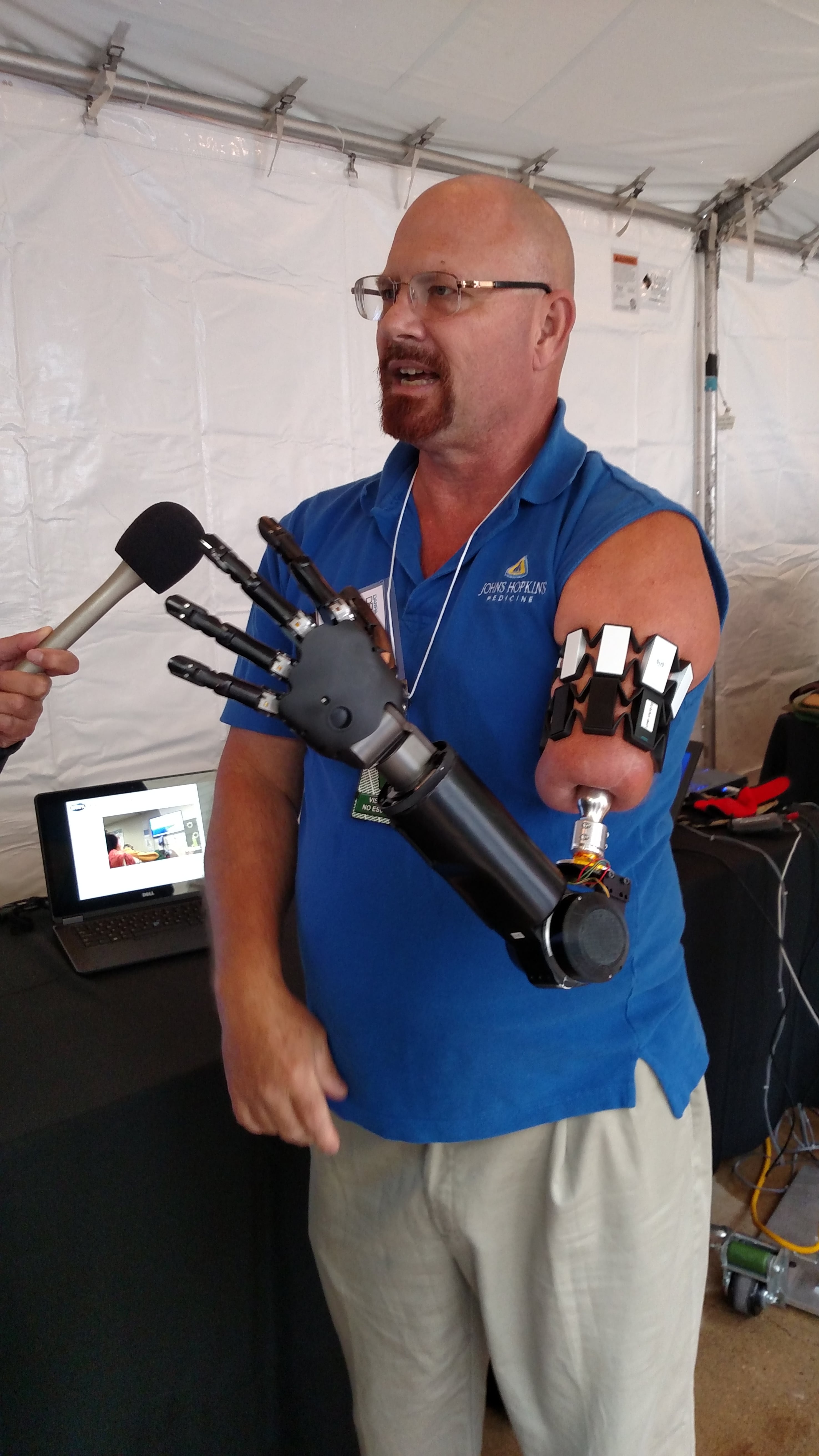
John Matheney has an interest in helping wounded warriors.
Photo Credit: Kyle Jahner/Staff
Matheney was a highlight of the DEMO Day, drawing a crowd with his ability to move his mechanical elbow, wrist and five fingered-hand. He shook hands with a gentle touch. He said he has enough control to gently hold a toddler's hand one minute, and exhibit significant strength the next.
Soft Exosuit
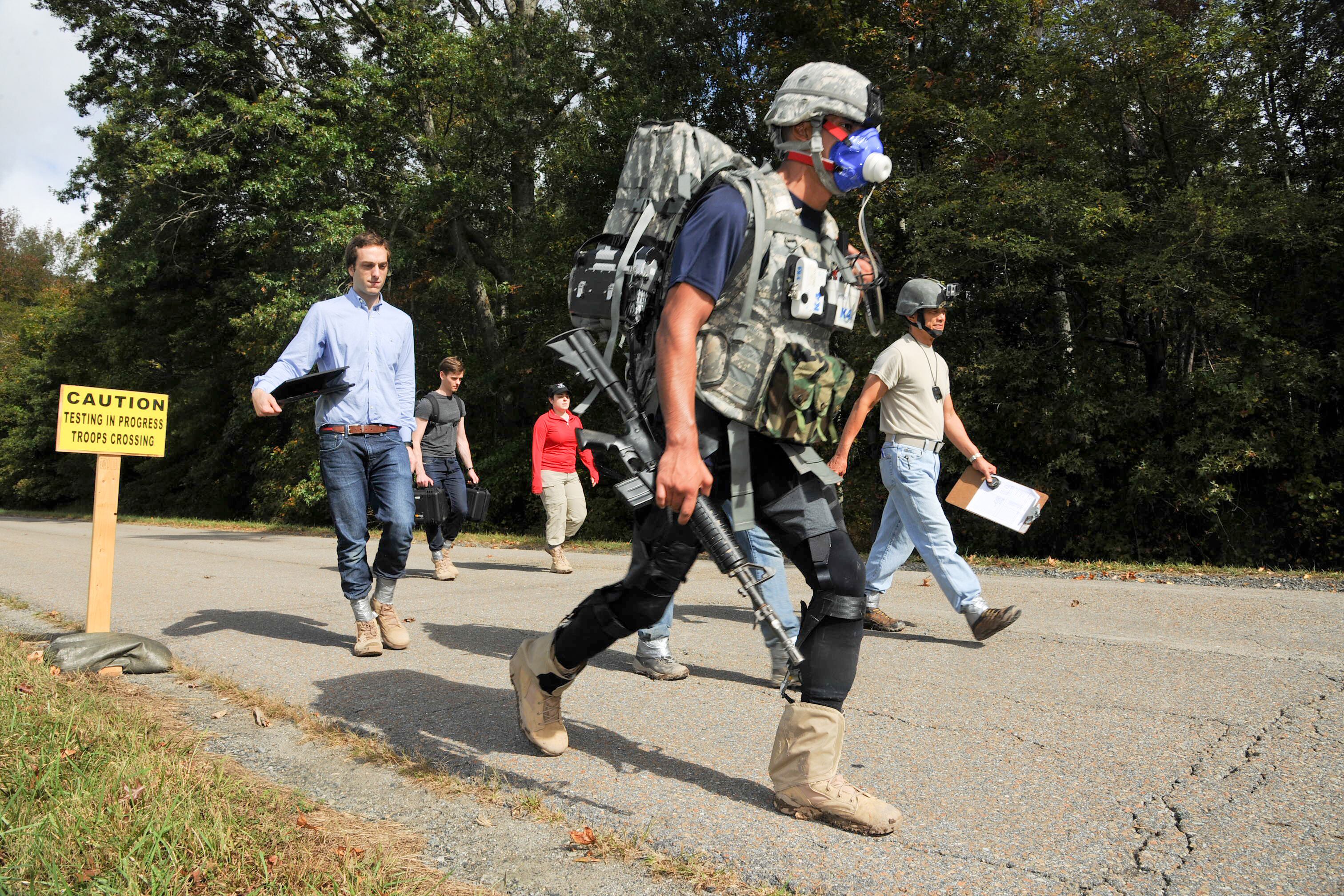
Spc. Rafael Boza, a Soldier from the 1st Infantry Division, tests the prototype smart suit on a three-mile course of paved roads and rough terrain at Aberdeen Proving Ground, Md., Oct. 3, 2014.
Photo Credit: Army
This soft robotic exoskeleton runs a series of cables that helps legs to walk. With soldiers carrying heavy loads over long distances, DARPA has funded work at Harvard to try to reduce fatigue. The current prototypes weigh 10 pounds total, with the motor mounted above the rucksack. Sensors help the machine understand walking patterns and adjusts to pace and movements, and the motor pulls the cables to reduce the effort the wearer has to put into it. Three remains years of work to optimize and economize it.
Sea Hunter
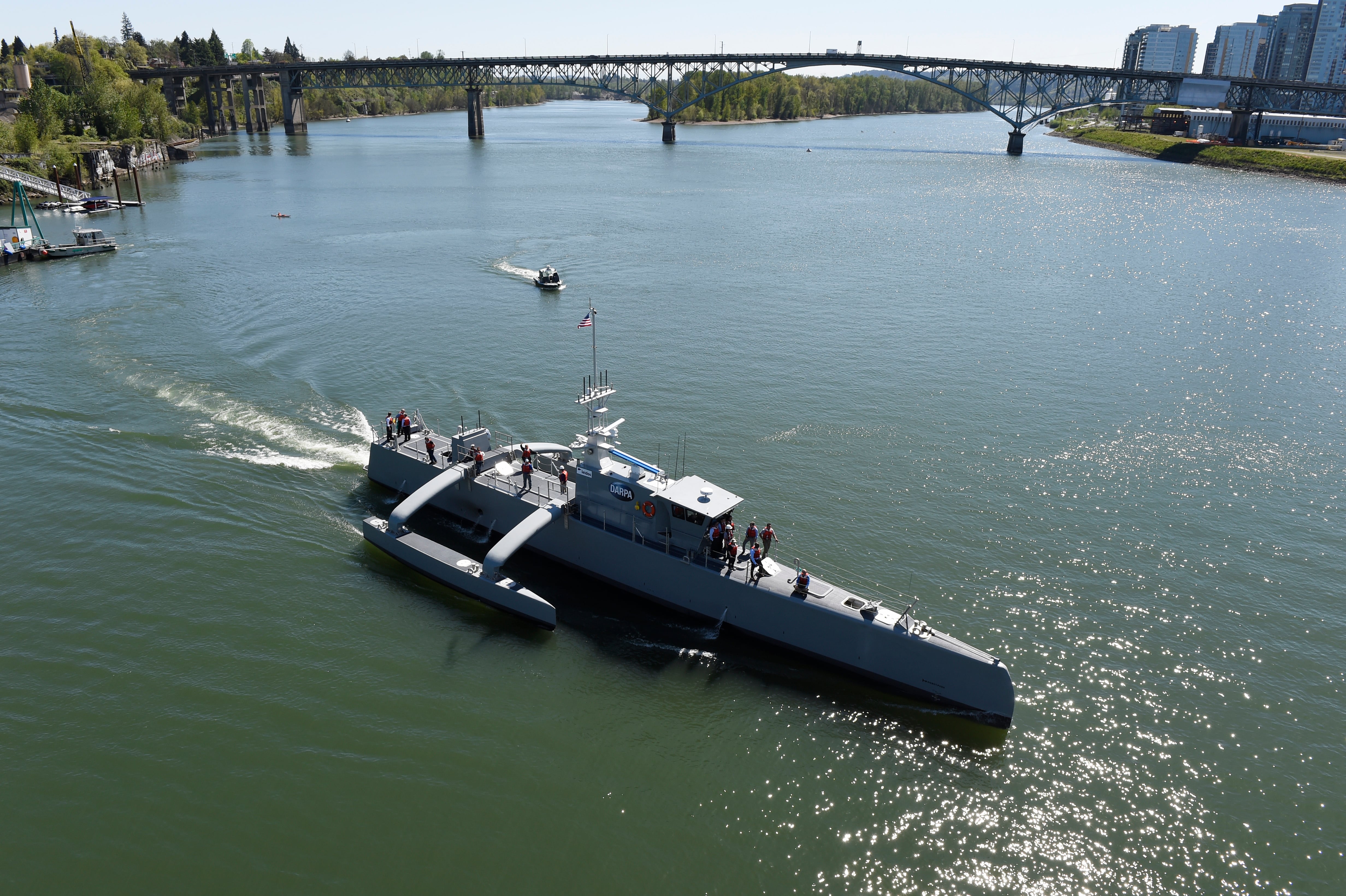
Sea Hunter, an entirely new class of unmanned ocean-going vessel gets underway on the Willamette River on April 7 following a christening ceremony in Portland, Ore.
Photo Credit: John F. Williams/Navy
Last month, the Navy christened its prototype unmanned Sea Hunter. The submarine-hunting, 132-foot vessel, is designed to be at sea for months, with the ability to float autonomously while obeying all the rules of the sea; in effect a Google self-driving car for the sea. This autonomous capability could ultimately be used for patrolling for submarines or other tasks, like venturing into dangerous waters to detect sea mines.
Autonomous sub
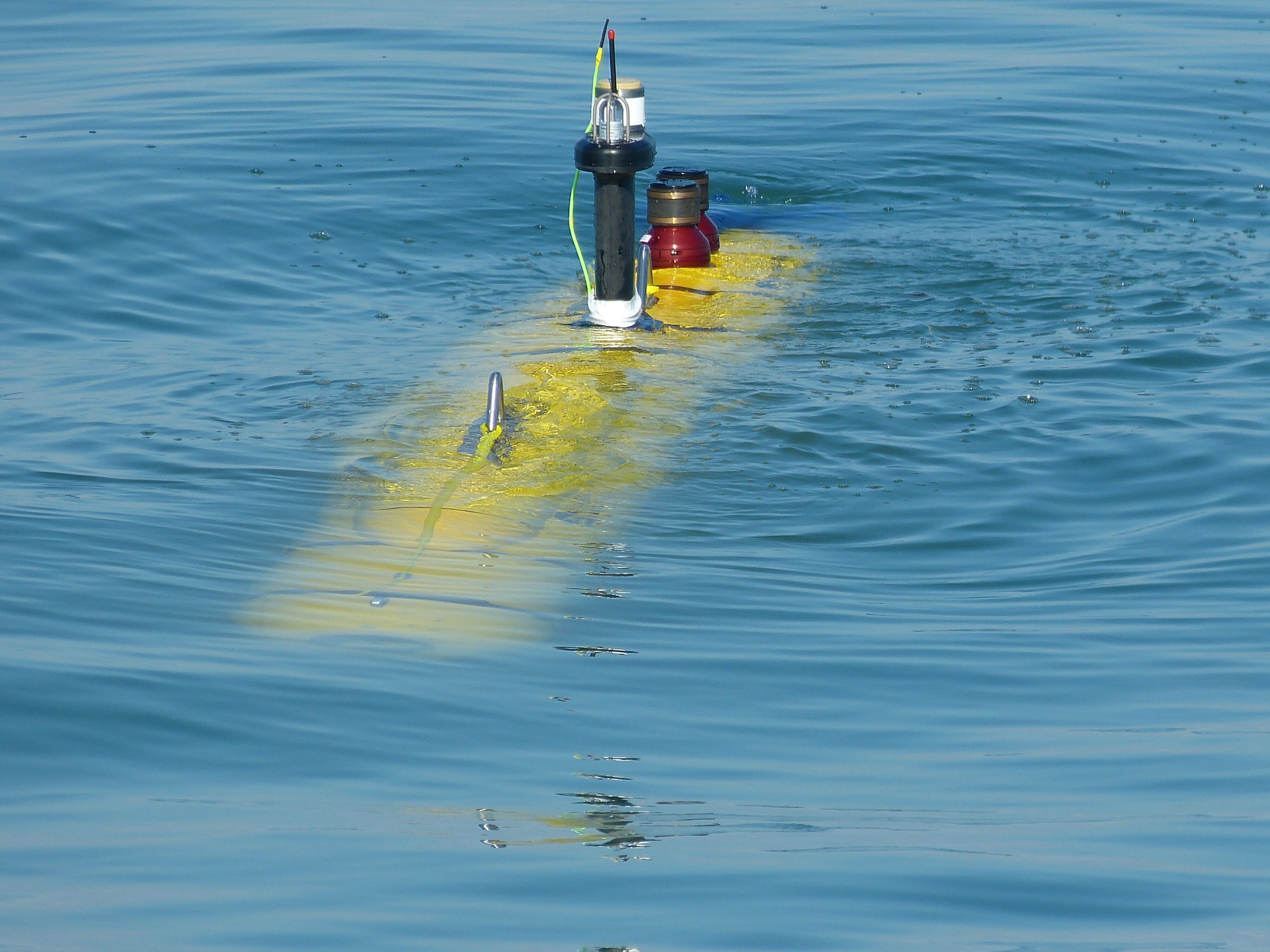
Distributed Agile Submarine Hunting (DASH)
Photo Credit: DARPA
Distributed Agile Submarine Hunting, or DASH, is a tube-like, unmanned submersible. It has been tested at below 5,000 meters deep, which could enable the Navy to detect enemy subs and ships from miles away. The next step is to improve power: currently a lithium battery limits operation to about an hour.
Wings made of engines
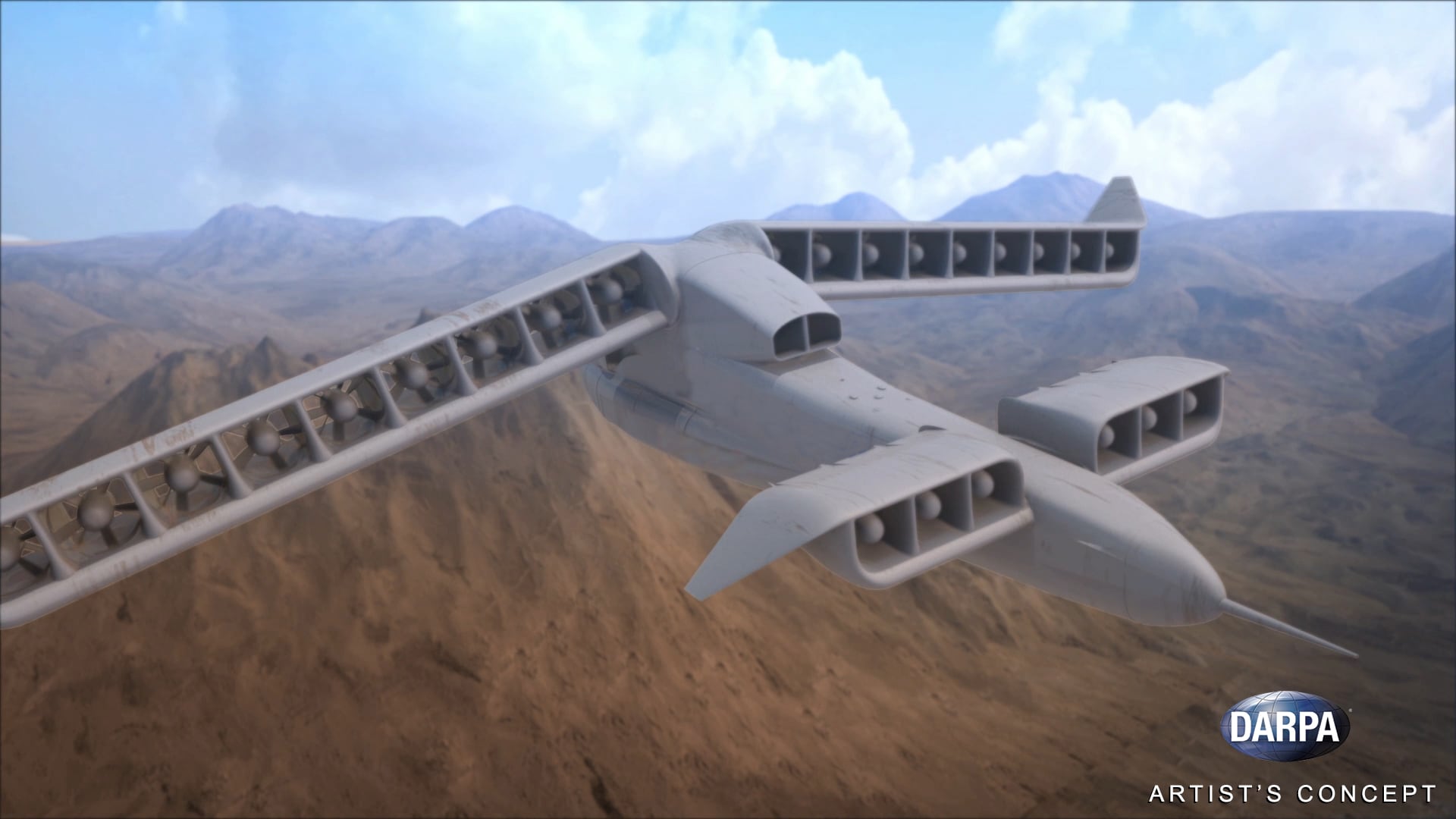
VTOL X-Plane design
Photo Credit: DARPA image
The full-sized prototype of the Vertical Takeoff and Landing Experimental (VTOL X)-Plane has been cleared for construction. It will have a 60-foot wingspan and weigh 12,000 pounds, with a 1,500 payload. It has a distinctive design with more than a dozen engines inside that make up the wings. If aimed up, it can achieve vertical lift, then shifting for forward motion at 400 knots. A miniature version has achieved a vertical takeoff.
Squad X
This program is working on a bevy of tools for dismounted soldiers to understand and dominate the battlefield. Roughly a dozen different projects are working on everything from robotics to electromagnetic sensors to a guided M320 grenade.
Digital night vision
The Army has recently seen important advances in night vision; this would go a step further and several degrees lighter.
PIXNET is a helmet-mounted camera that digitizes infrared capabilities. That saves a ton of weight; while an Enhanced Night Vision Goggle weighs around two pounds, the PIXNET camera weighs a fraction of a pound. It also would offer more settings, and be set up with a transmitter that could someday connect its signal to any of a series of devices, from a goggle to Family of Weapon Sights to a broader information technology platform like Nett Warrior.
Mini-manufacturing
DARPA is working on a number of micro-technologies; one example is the effort to build a machine that can assemble nano-structures. The incredibly-intricate structures made of carbon fiber can be very strong, yet very light.
What's next?
Not all projects displayed have reached a prototype stage, or are even close to it. Often the goal is to develop the technology to achieve a particular capability, rather than develop an operable military system or to achieve a tangible military goal. Down the line, it will be up to other organizations to seize what's been developed and develop programs of record.





